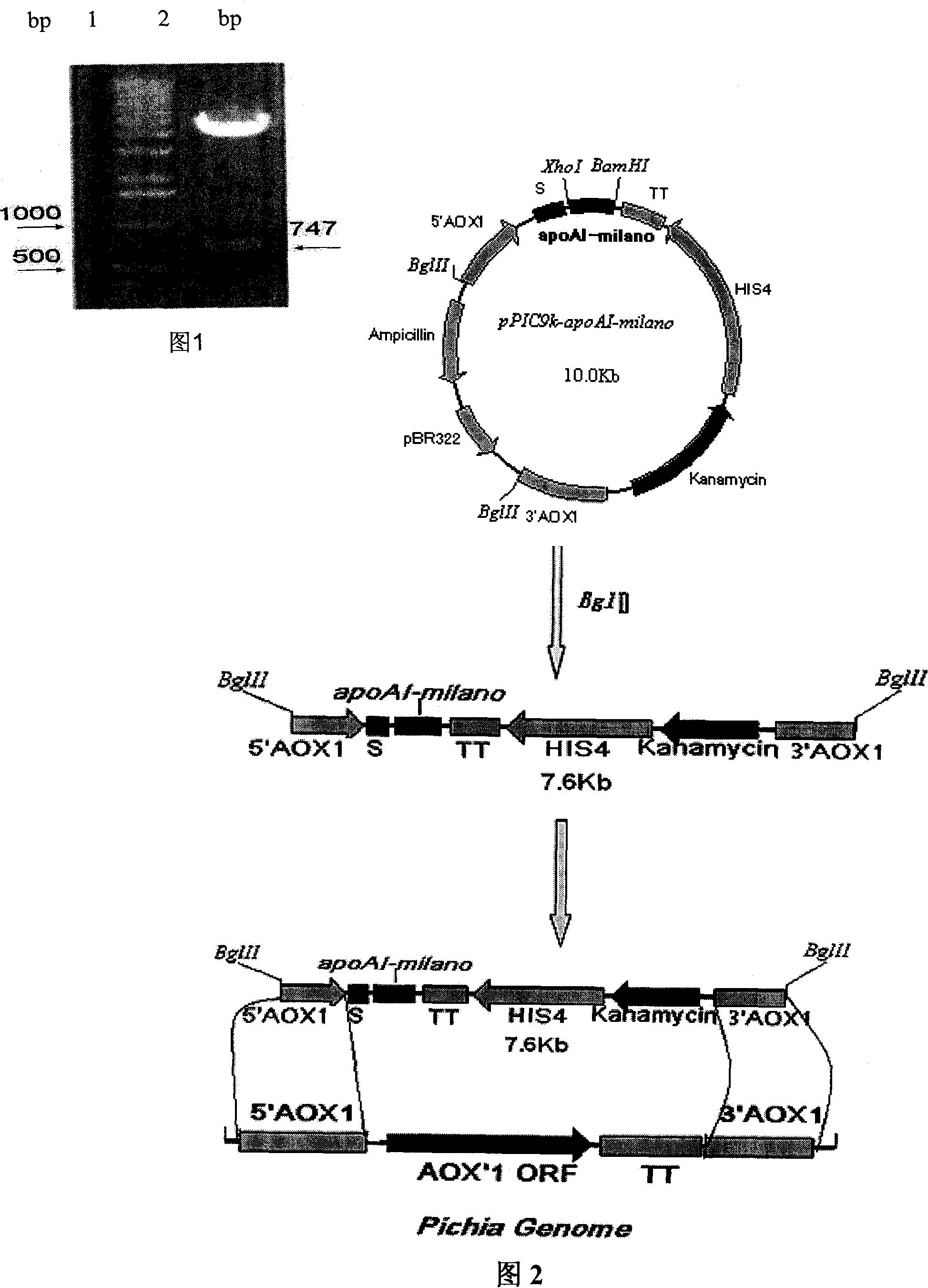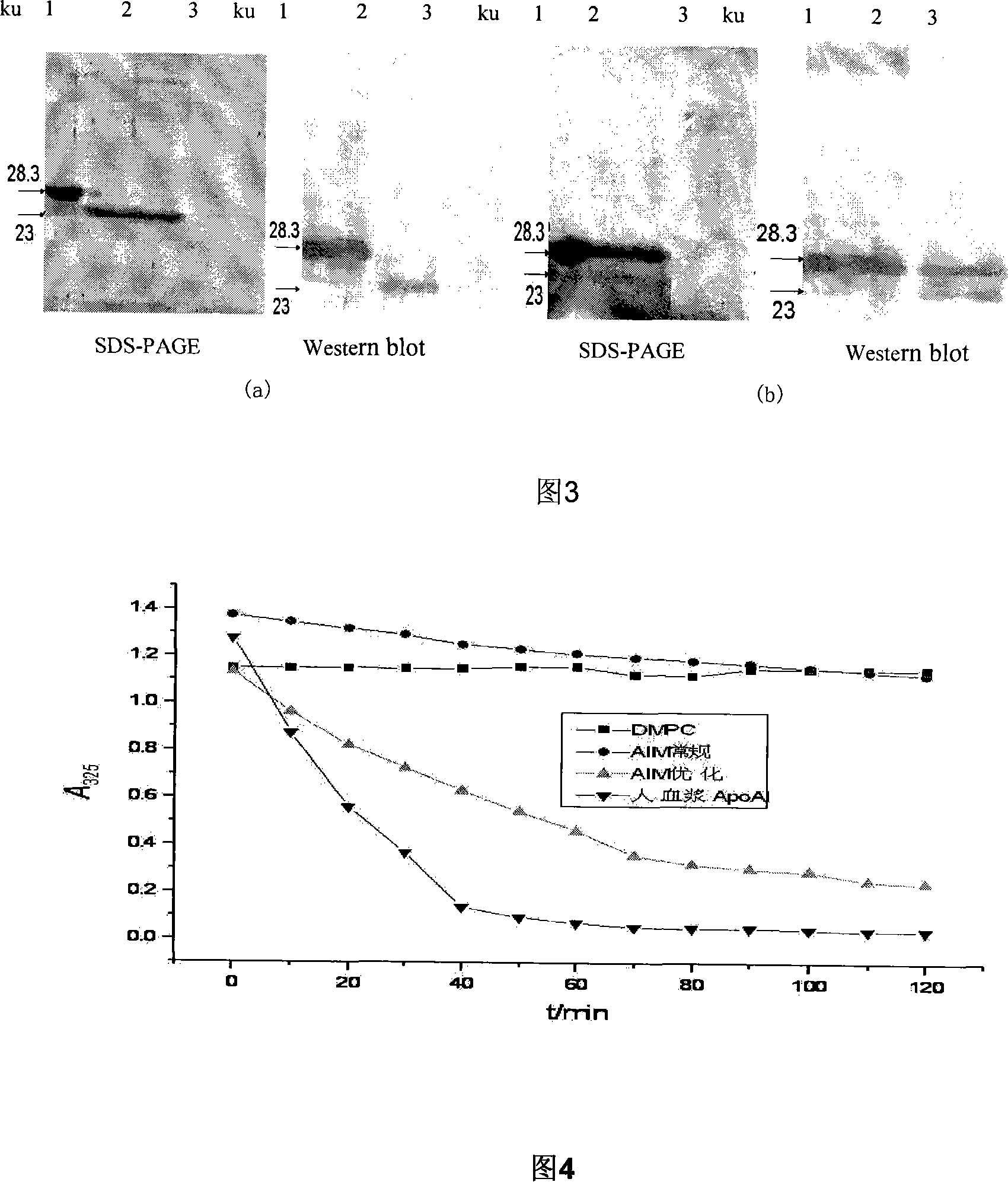Expression method for recombination human apolipoprotein AI Milano variant in pichia pastoris
A technology of apolipoprotein and Pichia pastoris, applied in the field of bioengineering
- Summary
- Abstract
- Description
- Claims
- Application Information
AI Technical Summary
Problems solved by technology
Method used
Image
Examples
Embodiment 1
[0025] Example 1 Construction and Identification of Recombinant Expression Plasmids
[0026] The recombinant plasmid pPIC9k-apoAI-milano is obtained by site-directed mutagenesis of the pPIC9k-apoAI plasmid by recombinant PCR method, and the 173rd Arg codon (CGC) of the cDNA is mutated into a Cys codon (TGT). Sequencing verification. The mutated apoAI-milano cDNA was inserted into the Xhol and EcoRI sites of pPIC9k, with a size of about 747bp.
Embodiment 2
[0027] Example 2 Screening and Identification of Yeast Engineering Strains
[0028] Recombinant expression plasmid pPIC9K-apoAI-milano DNA was digested with Bg / ll, mixed with Pichia pastoris GS115 competent cells, transformed by electric shock under the conditions of voltage 1300V, resistance 200Ω, capacitance 25μF, coated RDB plate, and cultured at 30°C for 3 Day, more than 1500 transformants were obtained. The transformants were screened for G418 resistance, and 23 highly resistant transformants that could still grow on the G4184mg / ml plate were obtained. Through shaking flask culture and SDS-PAGE identification, 20 yeast engineering strains capable of secreting and expressing rAIM were screened from G418 highly resistant transformants.
Embodiment 3
[0029] Example 3 Induced Expression of Yeast Engineering Bacteria
[0030] According to the conventional method, the engineered yeast strain was inoculated in a test tube of 3ml BMGY medium, and cultured with shaking at 30°C for 18h. Inoculate 1 ml of the cultured species into 50 ml of BMGY medium, culture with shaking at 30°C for 24 hours, centrifuge at room temperature 6000r / min for 6min, and collect the bacteria. The cells were transferred to 15ml of BMMY medium, cultured with shaking at 30°C for 72h, and methanol was added every 24h. The fermentation supernatant was taken for SDS-PAGE and Western blot identification, and it was found that the engineered bacteria were cultivated and induced by conventional methods, and the expression product rAIM would be partially degraded, and its molecular weight was slightly smaller than that of human plasma ApoAI (28.3KD), about 23KD.
[0031] Further, the present invention also optimizes the BMMY medium and the culture conditions, th...
PUM
 Login to View More
Login to View More Abstract
Description
Claims
Application Information
 Login to View More
Login to View More - R&D
- Intellectual Property
- Life Sciences
- Materials
- Tech Scout
- Unparalleled Data Quality
- Higher Quality Content
- 60% Fewer Hallucinations
Browse by: Latest US Patents, China's latest patents, Technical Efficacy Thesaurus, Application Domain, Technology Topic, Popular Technical Reports.
© 2025 PatSnap. All rights reserved.Legal|Privacy policy|Modern Slavery Act Transparency Statement|Sitemap|About US| Contact US: help@patsnap.com


